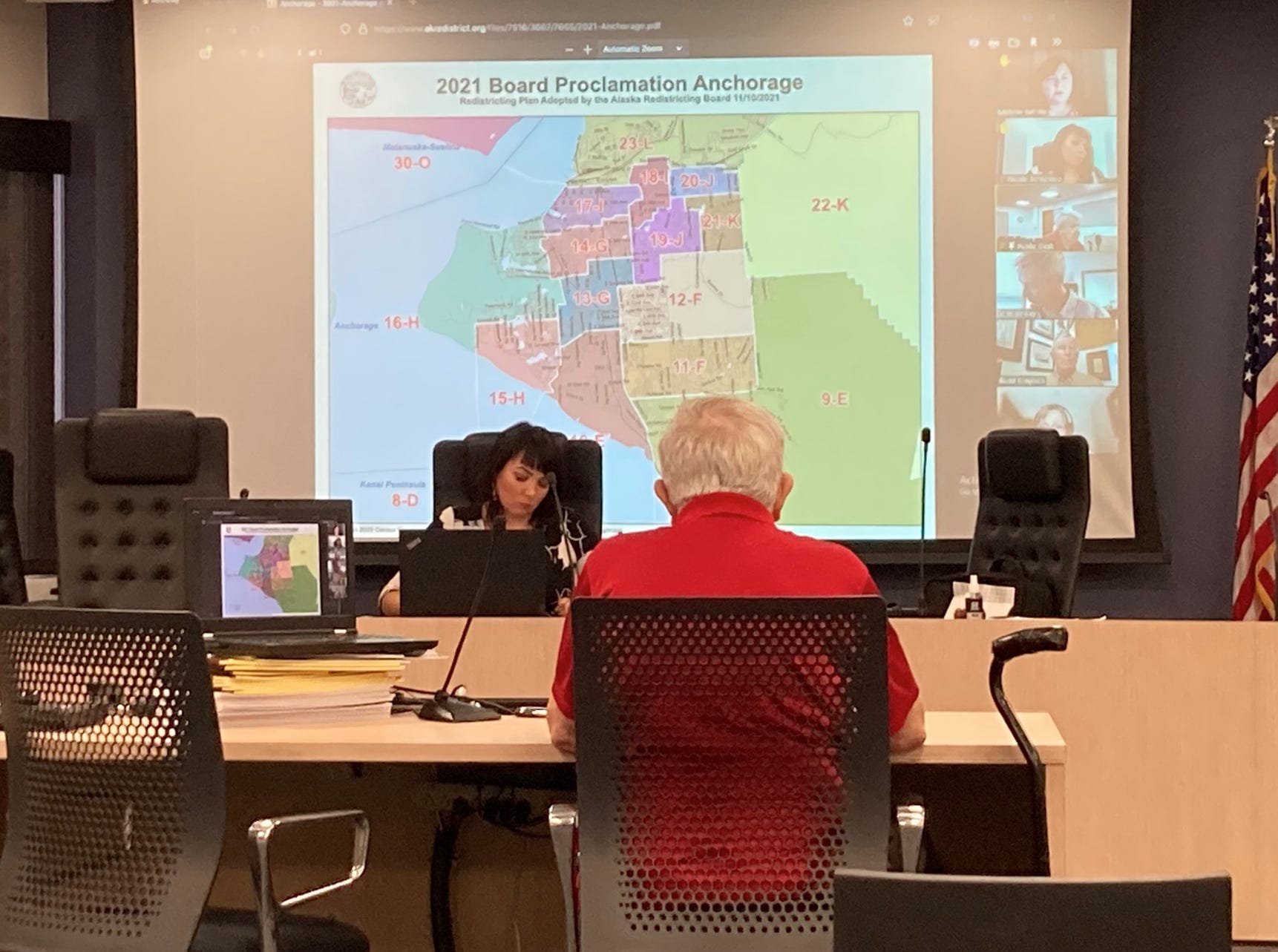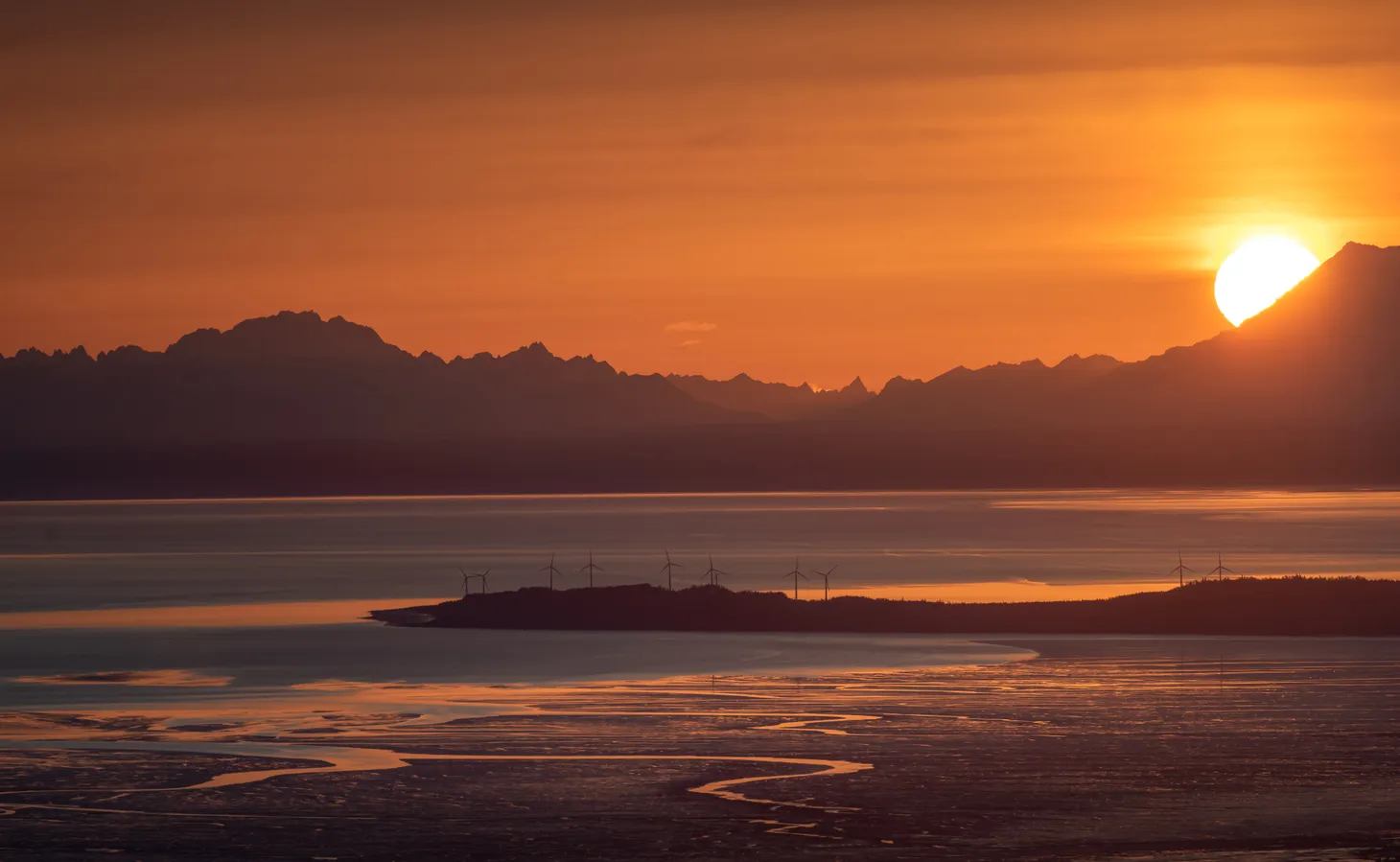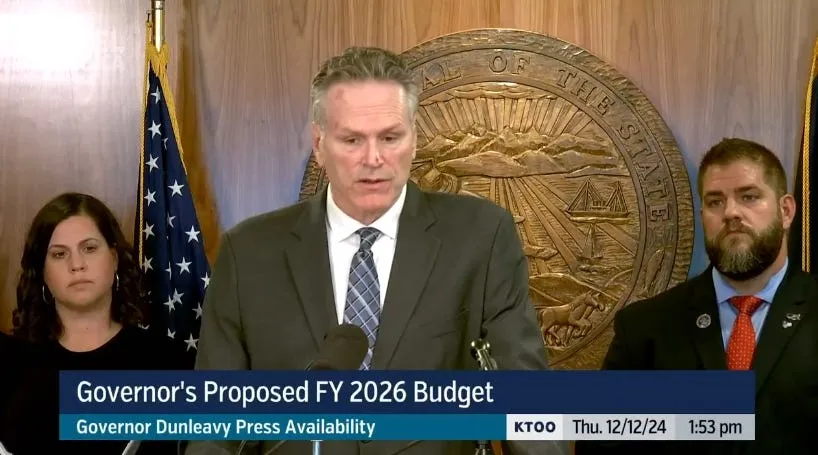Alaska Redistricting Board narrows options for Anchorage Senate maps
Also, it sure looks like the Anchorage Assembly's progressive/moderate core will hold onto the numbers to override the vetoes of far-right Mayor Dave Bronson.

Good evening, Alaska!
In this edition: The Alaska Redistricting Board has narrowed its options for the court-ordered rewrite of the Anchorage-area maps, withdrawing a proposal that would’ve required a wholesale redo of the process, and is now focusing in on two plans that minimize the required changes with the big difference being how they handle the deeply conservative Eagle River; and it sure looks like the Anchorage Assembly will be holding onto its veto override margin.
Spice level: 🌶️🌶️🌶️
Alaska Redistricting Board narrows its options

The Alaska Redistricting Board narrowed its options for a court-ordered rewrite of the Anchorage-area state senate districts today, withdrawing a proposal for an areawide redraw.
After hearing public testimony this morning, the Alaska Redistricting Board is focusing its attention in on two plans that both require only half of the city’s eight state senate districts to be altered from what the board already approved. The key difference between the two is how they treat Eagle River, which will have an impact on how the deeply conservative community is represented in the Legislature.
One map is being proposed by the East Anchorage plaintiffs who successfully challenged the Alaska Redistricting Board’s decision to create a safely Republican senate seat from one of Eagle River’s two house seats and a swingy district covering South Muldoon in East Anchorage. Both the Anchorage Superior Court and the Alaska Supreme Court agreed that it was a political gerrymander that violated equal protections by elevating Eagle River’s vote at the expense of East Anchorage voters. The East Anchorage plaintiffs’ map, which has been relabeled by the board as option 2, would put the two Eagle River districts together, the two Muldoon districts together and make other necessary changes to neighboring districts. It is as follows:

The other map that is being proposed comes from former Alaska Republican Party chair Randy Ruedrich as well as board member Bethany Marcum, whose comments that the original pairings would’ve given Eagle River the opportunity for “more representation” played a key role in the litigation. This map, which is called option 3b (it was reworked today to go from five changed districts to four) maintains the split of Eagle River, pairing the district that was previously paired with South Muldoon with the generally conservative South Anchorage/Girdwood district. Backers of it argue that the Eagle River and South Anchorage map is acceptable because the communities both have road service areas, fire dangers and bears. The areas don’t share any direct connection other than the Crow Pass trail that spans the Chugach Mountains that otherwise make it a roughly 30-minute drive through the rest of Anchorage to connect the two districts. Backers argue that shouldn’t matter as the Alaska Constitution only requires senate districts are touching. Many of those backers have also argued that their stout opposition to a similar arrangement during the Anchorage reapportionment process should have no bearing on their support for it now. This map is as follows:

Following the hearing, board members Nicole Borromeo and Melanie Bahnke withdrew a proposal, which has been called the Bahnke plan, that would reshuffle all the senate pairings. The proposal was drawn during the original redistricting process as an alternative to the plan proposed by Marcum and supported by the board’s conservatives. While Bahnke said she felt her proposal was still the best because it was never constrained by the decision to split Eagle River, she agreed that a more surgical approach was warranted and that they shouldn’t open the plan to new, unforeseen problems. The plan had also come under fire as a partisan plan put together with various conservative boogeymen, allegations that Bahnke has roundly denied.
Initial feedback
As far as testimony has gone so far, nearly every voice in favor of the plan that splits Eagle River have come from familiar Republican voices—including former Eagle River Republican Rep. Dan Saddler, conservative Anchorage Assemblymember Jamie Allard, extreme-right activist Judy Eledge and many others—who are all unified in saying that dividing Eagle River into two senate districts makes more sense than pairing Eagle River with Eagle River.
Not everyone from Eagle River or even from the conservative spectrum of the political world has supported it, however.
Former Eagle River Republican Sen. Randy Phillips called in today, testifying that Eagle River and South Anchorage may have superficial similarities but had no meaningful connection. Where some had claimed that a shared similarity with widespread use of septic systems, Phillips noted that the “vast majority” of the Eagle River district is on public, piped water. He also noted that Eagle River has one single road service area with membership pulled from local community councils where the South Anchorage seat has more than a dozen road service areas that are elected.
“The only thing that’s connecting Hillside with Eagle River is Chugach State Park, to be frank,” he said.
This content is for Paid Members
Unlock full access to The Alaska Memo and see the entire library of members-only content.
SubscribeAlready have an account? Log in



